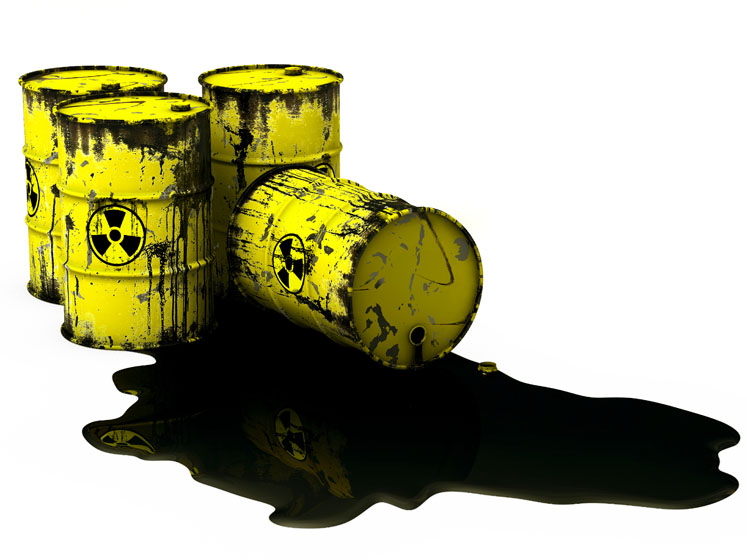The challenge is far from simple adherence to guidelines; it demands a rigorous approach to ensure efficient healthcare delivery. This article examines how to achieve that balance and remain competitive in what can be a very volatile market
Hazardous chemicals, both potent and essential, fuel pharmaceutical innovations and lay the foundation for revolutionary health solutions. However, these powerful substances are rife with inherent risks.
Any error in handling can trigger workplace accidents, inflict significant environmental damage or compromise the safety and efficacy of medicinal products. The potential fallout from such mishaps can be devastating, causing extensive financial losses and harming a company’s reputation.
A closer look at the handling process reveals intricate layers of complexity: each stage — from sourcing and transportation to storage, use and disposal — presents a unique set of challenges.
As such, the management of hazardous chemicals requires comprehensive oversight, rigorous safety standards and adaptive strategies to minimise risks and ensure smooth operations.

The balancing act: cost, safety and productivity
There’s a delicate balance required here — between ensuring safety, maintaining cost-efficiency and fostering productivity. Companies are constantly seeking methods to harmonise these seemingly competing interests. We’ll delve into the intricacies of each aspect, uncovering strategies that can help organisations to achieve an optimal equilibrium.
The cost factor
The management of hazardous chemicals in the pharmaceutical industry entails an intricate web of financial considerations. Cutting corners and reducing costs might seem tempting as a means to maximise short-term profits … but this approach often comes with a hefty price.
Cost-saving strategies that compromise safety or product quality not only introduce substantial risks, but may also result in significant long-term financial repercussions.
Among these are potential lawsuits, regulatory penalties and loss of consumer trust, all of which can tarnish a company's reputation and threaten its market position.
Cutting corners to save costs might inadvertently increase expenses in other areas: a reduced emphasis on safety measures might elevate the incidence of workplace accidents, leading to spiralling insurance costs and extended operational downtime.
Conversely, adopting a forward-thinking approach to operational efficiency, even if it requires an upfront capital investment, can offer substantial financial returns in the long run. This investment not only safeguards operations but also paves the way for optimised cost-saving mechanisms.
The benefits are multifaceted, impacting different areas of operations.
- Reduced accident rates: Investing in safety training and equipment significantly lowers the incidence of workplace accidents. This not only ensures the well-being of employees but also minimises operational disruptions that result from such incidents.
- Lower long-term healthcare costs: Companies that prioritise safety experience a decrease in work-related illnesses and injuries, leading to reduced healthcare expenses and insurance premiums with time.
- Enhanced public reputation: A commitment to safety, quality and employee well-being are likely to yield a more positive public perception. This enhanced reputation can open up new business opportunities, fostering growth and profitability.
Safety measures
The inherent risks associated with hazardous chemicals make safety measures in the pharmaceutical industry an absolute necessity. These measures are not simply guidelines or recommendations; they form the bedrock of operational protocols.
A slip in these standards can result in accidents causing harm to personnel, significant property damage or the release of harmful substances into the environment.
Deviations from safety standards also introduce a risk of severe financial losses, stemming from potential lawsuits, penalties or the costs associated with clean-up and remediation.
Implementing an effective safety protocol requires a multifaceted approach, encompassing various aspects of operations.
- Comprehensive employee training programmes: All personnel involved in the handling of hazardous chemicals should undergo regular and thorough training. This should cover appropriate handling techniques, the use of protective gear, emergency response procedures and more.
- Rigorous safety audits: These help to ensure compliance with safety protocols and identify potential areas of improvement. The audits should assess both the physical handling of hazardous materials and the effectiveness of training programmes.
- Advanced personal protective equipment (PPE): High-quality PPE is essential to protect employees from direct exposure to hazardous chemicals. This equipment should be continually evaluated and updated as necessary to meet the highest safety standards.
- Proper chemical storage facilities: Safe storage of hazardous chemicals can significantly reduce the risk of accidental spillage or exposure. Facilities should be designed and maintained to prevent leaks and contamination … and to control temperature and pressure conditions as necessary.
Maintaining productivity
Productivity is a cornerstone of success … and not just in the pharma industry. Yet, balancing high productivity levels with rigorous safety protocols and cost management is a daunting task.
It may seem as though each factor works against the others, creating a paradox wherein improvements in one area come at the expense of another. However, this need not be the case. An integrated approach can potentially transform this perceived conflict into a symbiotic relationship.
In this framework, safety measures and cost management strategies enhance productivity rather than impede it. Several factors contribute to this balancing act.
- Efficient workflow designs and implementing lean practices — and streamlining workflows — can reduce waste and improve productivity. This includes minimising unnecessary steps, simplifying procedures and using automation when feasible.
- Preventive maintenance programmes avert unexpected breakdowns and minimise downtime. Machinery and tools that are always in optimal working condition directly reduce delays and maintain steady productivity.
- Strategic resource allocation, whether it’s personnel, time or materials, is crucial. This requires a thorough understanding of the operation’s needs and priorities, and the flexibility to adjust resource distribution as these needs evolve.
Innovative strategies and best practices
With pharmaceuticals dwelling in a constantly evolving landscape, innovation and adaptation are crucial. The advent of advanced technologies and improved handling techniques continually refine safer and more efficient strategies to manage hazardous chemicals.

Incorporating these innovations and adhering to established best practices ensures a more effective balance between cost, safety and productivity.
The application of best practices is not a one-size-fits-all solution. It requires a thorough understanding of the unique needs, potential risks and operational capacities of each organisation.
This personalised approach ensures that implemented strategies are not only effective but sustainable in the long-term.
Leveraging technology in hazardous chemical management
Modern technology plays a pivotal role in managing hazardous chemicals. Digital tools and advanced machinery can streamline workflows, bolster communication and co-ordination, improve the accuracy of record keeping and facilitate predictive maintenance and process automation.
The resulting improvements in operational efficiency, reductions in downtime and optimal resource allocation are invaluable for balancing cost, safety and productivity.
Technology also opens doors to improved hazard prediction and prevention.
Sophisticated sensors can monitor conditions in real-time to provide early warnings of potential risks.
Similarly, machine learning algorithms can analyse data to forecast potential safety issues and suggest preventive measures. These technologies offer significant potential for the proactive management of hazards.
Sustainability and the environment
Discussing hazardous chemical management without acknowledging environmental impacts would be incomplete. Today, environmental, social and governance (ESG) considerations are pivotal in the pharmaceutical industry.
Therefore, the adoption of sustainable and environmentally friendly practices in hazardous chemical management is not just about corporate responsibility; it's a strategic necessity that influences stakeholder perception, regulatory compliance and the sustainability of the business.
Furthermore, considering the wider social and ecological impacts of hazardous chemical management ensures a holistic approach. This includes minimising waste generation, reducing energy consumption and committing to the recycling and safe disposal of chemicals. Organisations must ensure they are contributing positively to their communities and the environment.
Conclusion
Navigating the realm of hazardous chemical management in the pharmaceutical industry presents significant challenges. Yet, success hinges on maintaining a delicate balance between cost, safety and productivity.
As the industry continues to grapple with these complexities, the emphasis should be on championing strategies that ensure safer, more efficient and sustainable operations.
In the end, it's a dynamic fusion of innovation and prudence that will guide the industry towards a future in which pharmaceutical excellence and safety are inseparable.
